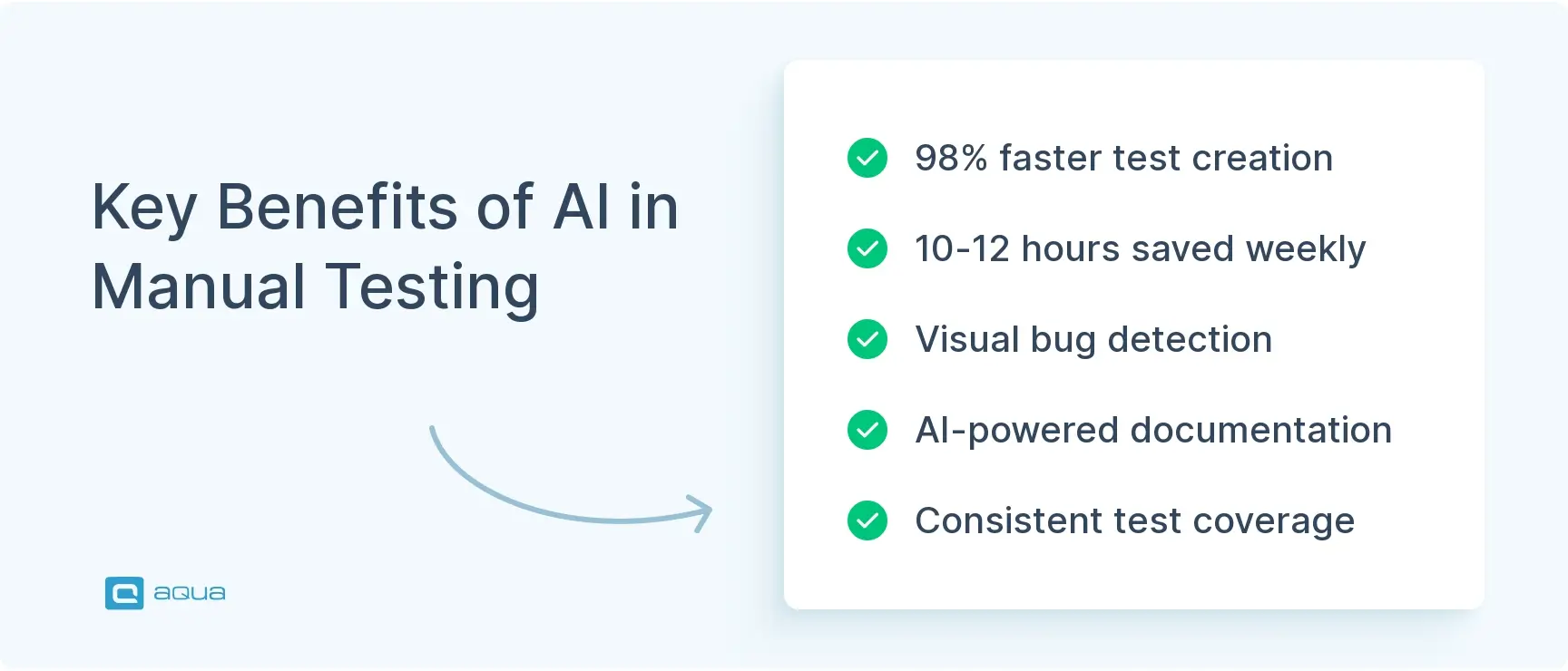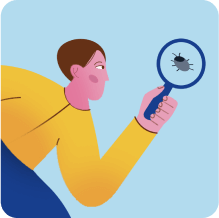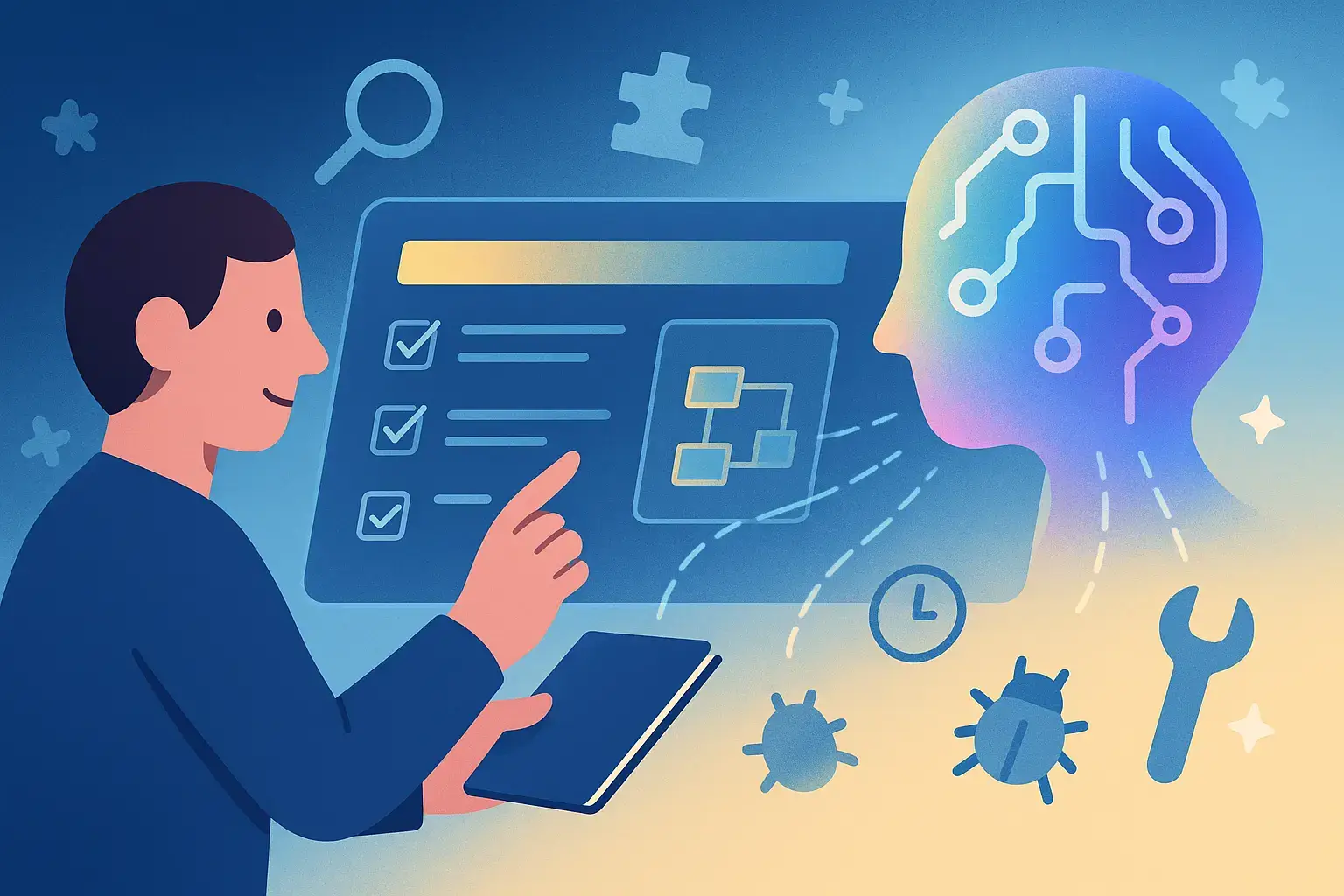Why Manual Testing Still Matters
For years, there have been predictions about traditional automation replacing manual testing. Now, with the rise of AI, the same idea remains, with a different component: “AI will replace manual testers”. Yet here we are, and manual testing remains essential to delivering quality software. There’s a reason for that.
Manual testing excels where human insight matters most. When you’re exploring an application like a real user would, clicking around, trying unexpected combinations, noticing when something feels off, you’re doing work that no script can replicate. You catch:
- The bugs that live in the gaps between requirements
- The usability issues that make users frustrated, even when everything technically works
- The accessibility problems that traditional automated tests miss entirely.
Think about the last time you found a critical bug during exploratory testing. Maybe it was a workflow that broke when users navigated differently than expected, or a visual element that looked wrong on certain screen sizes. These discoveries happen because you bring context, creativity, and real-world perspective that scripted tests simply don’t have.
But manual testing has real limitations that every QA team feels. It’s time-intensive, especially when you’re manually verifying the same core functionality sprint after sprint. Different testers might approach the same feature differently, leading to inconsistent coverage. And as applications grow more complex, it becomes impossible for human testers to comprehensively cover every scenario and edge case within reasonable timeframes.
This is why the future is about combining human strengths with AI capabilities to create something more effective than either approach alone.
How AI Enhances Human Testing
Quality assurance work involves two distinct types of tasks: creative problem-solving that requires human judgment, and systematic pattern-matching that machines excel at. AI-assisted testing lets you focus on the former while automating the latter.
Intelligent Test Case Generation
Writing comprehensive test cases from scratch takes time, especially when you’re trying to cover all the edge cases and user scenarios. AI can jumpstart this process by analysing your requirements and user stories to suggest test scenarios you might not have considered.
Modern AI tools use natural language processing to convert plain English descriptions into structured test cases. For example, if your user story says “As a customer, I want to filter products by price range,” AI can generate test cases covering boundary values, invalid inputs, and various filter combinations. Tools like aqua cloud can turn these descriptions into executable test scenarios, cutting hours off your test planning.
The key benefit is that AI gives you a comprehensive starting point that you can refine with your domain knowledge and creative thinking. So don’t expect perfection, as AIs can make mistakes too.

This is precisely where aqua cloud’s AI Copilot shines. Unlike generic AI tools, aqua was specifically designed to address the pain points of manual testing. With aqua, you can generate comprehensive test cases from requirements in seconds, automatically apply testing techniques like boundary value analysis and equivalence partitioning, and enjoy self-documenting exploratory sessions. The platform seamlessly integrates AI-powered testing with traditional manual approaches, reducing test case creation time by up to 98% while maintaining the human judgment that’s irreplaceable in quality assurance. If you’re keen for a more traditional automation approach, aqua’s integrations with Selenium, Jenkins, Ranorex and others supercharge your efforts, while Jira, Azure DevOps, and Confluence integrations help you integrate smart testing into your toolkit.
Transform your manual testing with AI that understands QA, saving 10-12 hours per week per tester
Smarter Bug Detection and Prioritisation
That feeling, when you’re manually checking the same visual elements across multiple browsers and screen sizes, is painful. AI excels at this type of systematic comparison work. Visual AI can automatically detect UI inconsistencies, layout problems, and visual regressions that would take you hours to verify manually.
But AI goes beyond just finding visual bugs. Machine learning algorithms can analyse your application’s behaviour patterns and flag anomalies that might indicate underlying issues. They can even predict which areas of your application are most likely to contain defects based on code changes and historical bug patterns.
Tools like Applitools and TestCraft use visual AI to spot subtle UI issues that human eyes might miss after hours of testing, while also classifying bug severity based on potential user impact.
AI-Powered Exploratory Testing Support
Exploratory testing is where your creativity and intuition shine, but AI can serve as an intelligent assistant during these sessions. Instead of replacing your exploratory approach, AI can suggest areas to focus on based on recent code changes, track your coverage in real-time, and automatically document the paths you’ve tested.
Some AI tools can even identify similar areas in your application that might have related issues, helping you discover bug patterns across different features. TestIM’s AI features, for example, help testers discover and document new scenarios during exploratory sessions while maintaining the human-driven nature of the exploration.
Self-Healing Test Maintenance
We’ve all experienced the frustration of minor UI changes breaking multiple test scripts overnight. AI-powered self-healing capabilities can automatically adapt to small interface changes, recognising elements even when their properties shift and reducing the maintenance burden that typically consumes so much testing time.
This means less time spent fixing broken tests and more time available for meaningful testing work. Tools like Mabl incorporate these self-healing capabilities, automatically adjusting to UI changes without requiring manual intervention for every minor interface modification.
AI-assisted testing and its limitations
AI tools can significantly enhance your testing workflow, but they have clear limitations that every QA team should understand before implementation. Knowing these constraints helps you set realistic expectations and plan how to combine AI capabilities with human expertise effectively.
Context and Business Impact: AI can detect that a checkout button changed colour, but it can’t understand whether that change affects your brand consistency or user conversion rates. Understanding the business impact of bugs, whether a defect is critical for your specific user base or just a minor inconvenience, requires domain knowledge that AI lacks.
Creative Problem-Solving: AI works within the patterns it has learned from training data. It won’t think to test what happens when a user tries to purchase an item while their payment method expires mid-transaction, or imagine edge cases based on unusual but real user behaviours that fall outside its training scenarios.
User Experience Evaluation: Determining whether an interface feels intuitive, whether users will find a workflow frustrating, or how accessible a feature is for users with disabilities requires human empathy and understanding that AI cannot replicate.
Implementation Overhead: Adding AI tools to your testing process requires learning new interfaces, understanding how the AI makes decisions, and training team members on both the tools and how to interpret AI-generated results. This learning curve can initially slow down productivity.
Signal vs. Noise: AI tools can generate false positives, flagging changes or anomalies that aren’t actually problems for real users. Distinguishing between genuine issues and AI misinterpretations requires human judgment and can add review overhead.
Data Requirements: AI testing tools need substantial amounts of quality data to function effectively. If your application is new, has limited usage patterns, or operates in a specialised domain, AI may not have enough context to provide meaningful insights.
The Future of Manual Testing, Empowered with AI
The way QA teams work is changing as AI tools mature and become more integrated into daily testing workflows. These trends will shape how you approach testing in the coming years.
Collaborative Testing Workflows: Testing teams are developing new working patterns where AI handles systematic verification tasks while humans focus on creative exploration and strategic decisions. You’ll likely see your role evolving to include more test strategy, AI tool configuration, and interpreting AI-generated insights. The distinction between manual and automated testing is blurring as AI creates a middle ground where human judgment guides intelligent automation.
Democratised AI Testing Tools: AI testing capabilities are becoming accessible to teams without data science backgrounds. Low-code and no-code AI testing platforms let QA professionals configure intelligent testing without writing complex algorithms. Cloud-based AI testing services eliminate infrastructure barriers, making these tools available to smaller teams that couldn’t previously afford enterprise-level AI capabilities.
Proactive Quality Assurance: Instead of just finding existing bugs, AI will increasingly help prevent them. Machine learning models will analyse code changes to predict which areas are most likely to introduce defects, suggest optimal test coverage based on risk analysis, and recommend when specific tests should run. This shift from reactive to predictive testing will help teams catch issues before they reach production.
Natural Language Testing Interfaces: Testing tools are becoming more conversational. You’ll be able to create tests by describing user scenarios in plain English, ask questions about test coverage using everyday language, and receive bug reports that automatically translate technical issues into business impact terms. This reduces the barrier between domain knowledge and test implementation.
Responsibility and Transparency Questions: As AI makes more testing decisions, new challenges emerge around accountability and bias. Teams need to consider who’s responsible when AI misses critical issues, how to ensure AI doesn’t perpetuate testing biases, and which human testing skills remain essential regardless of AI advancement. Maintaining transparency in AI-driven testing decisions becomes crucial for team confidence and regulatory compliance.
Conclusion
So AI isn’t here to replace manual testers; it’s upgrading what they can accomplish. The best QA teams will be those who learn to dance with AI, letting it handle the repetitive verification while humans focus on the creative exploration that machines can’t match. The future of testing is intelligently augmented. By embracing AI as a partner rather than a replacement, you can focus on the parts of testing that require human judgment, creativity, and contextual understanding. The question isn’t whether to adopt AI in your manual testing practice, but how to do it in a way that plays to both human and machine strengths. The testing teams that figure this out first will have a serious advantage in delivering higher quality software faster, without burning out their people.


















